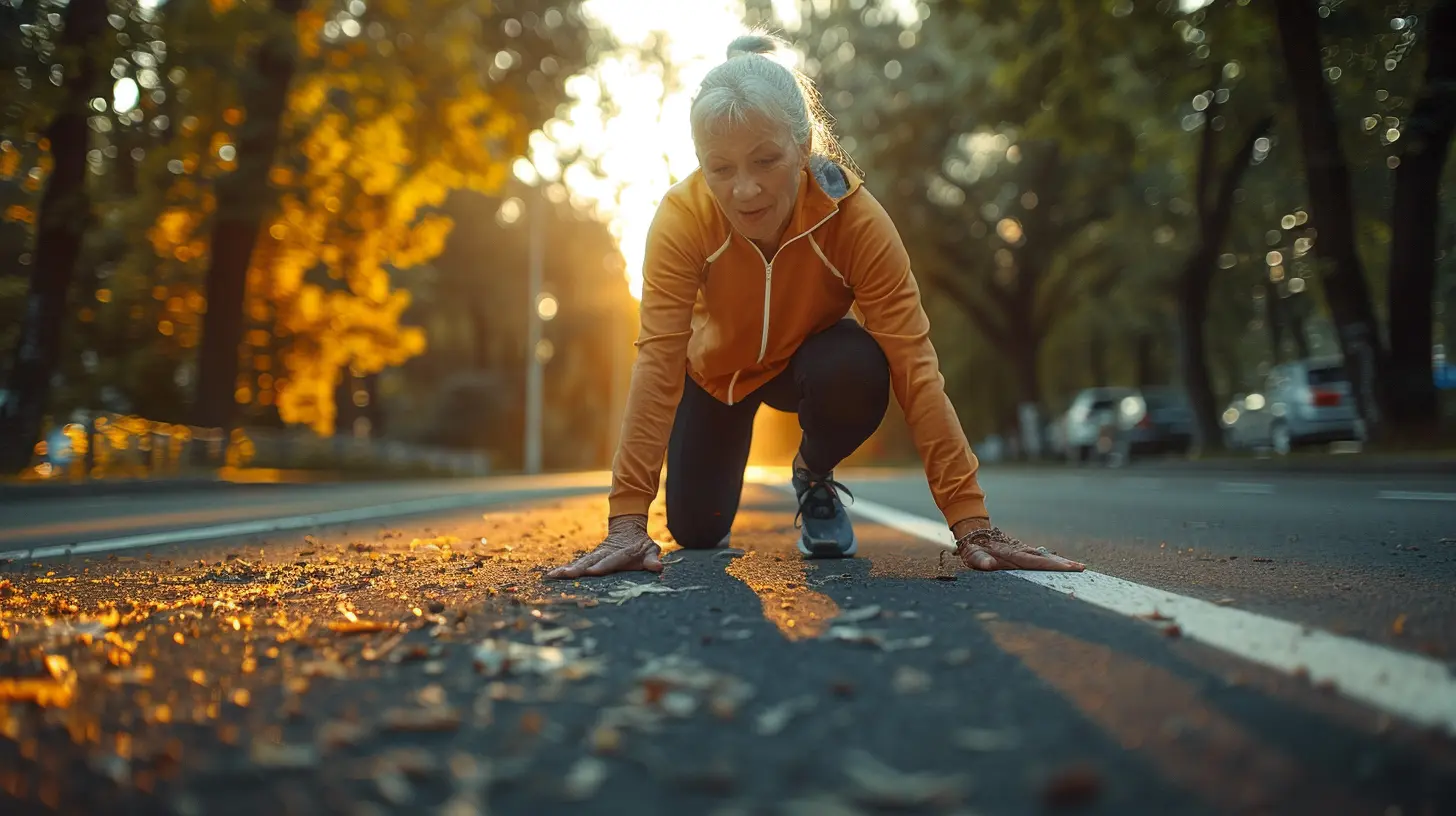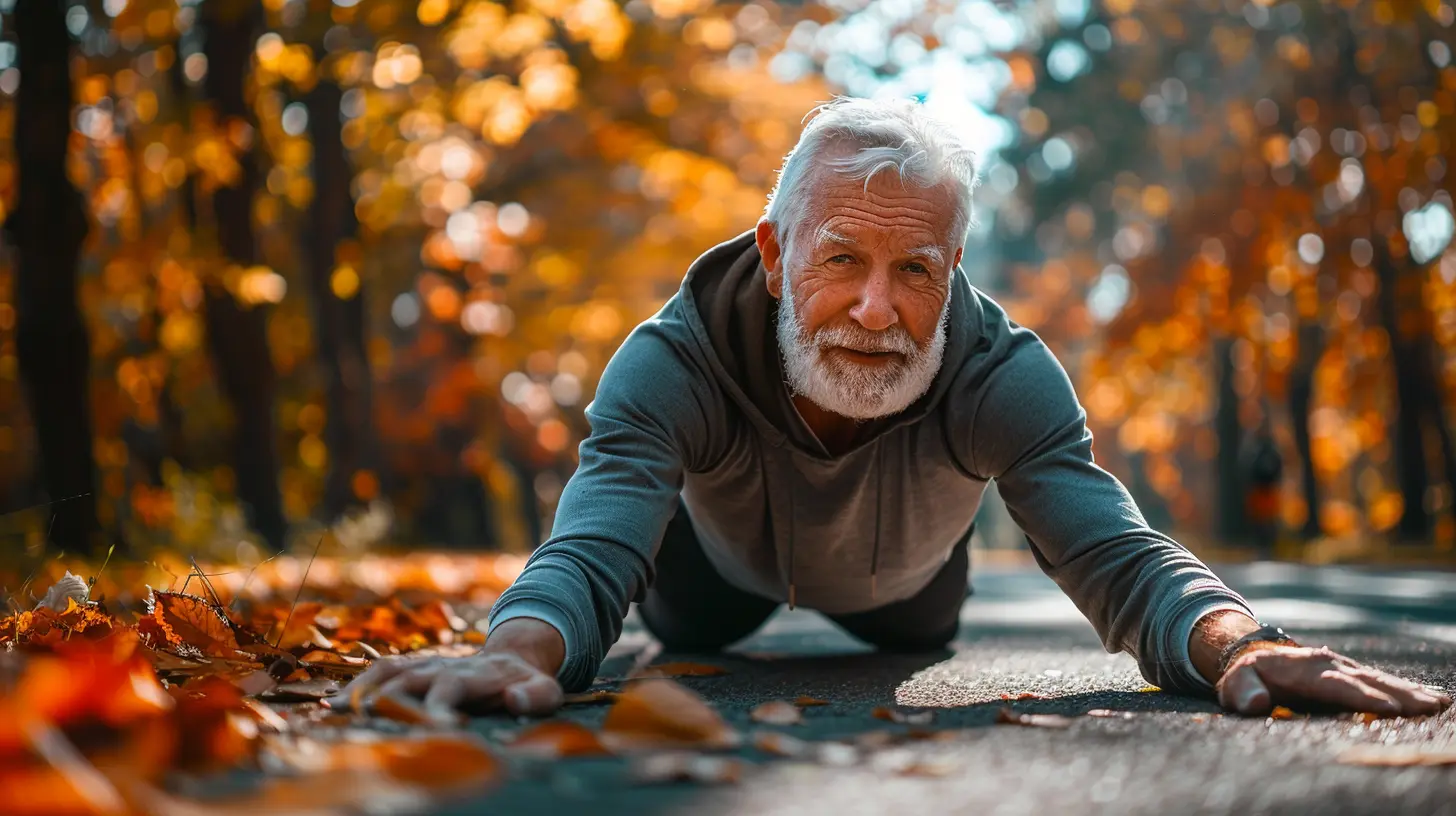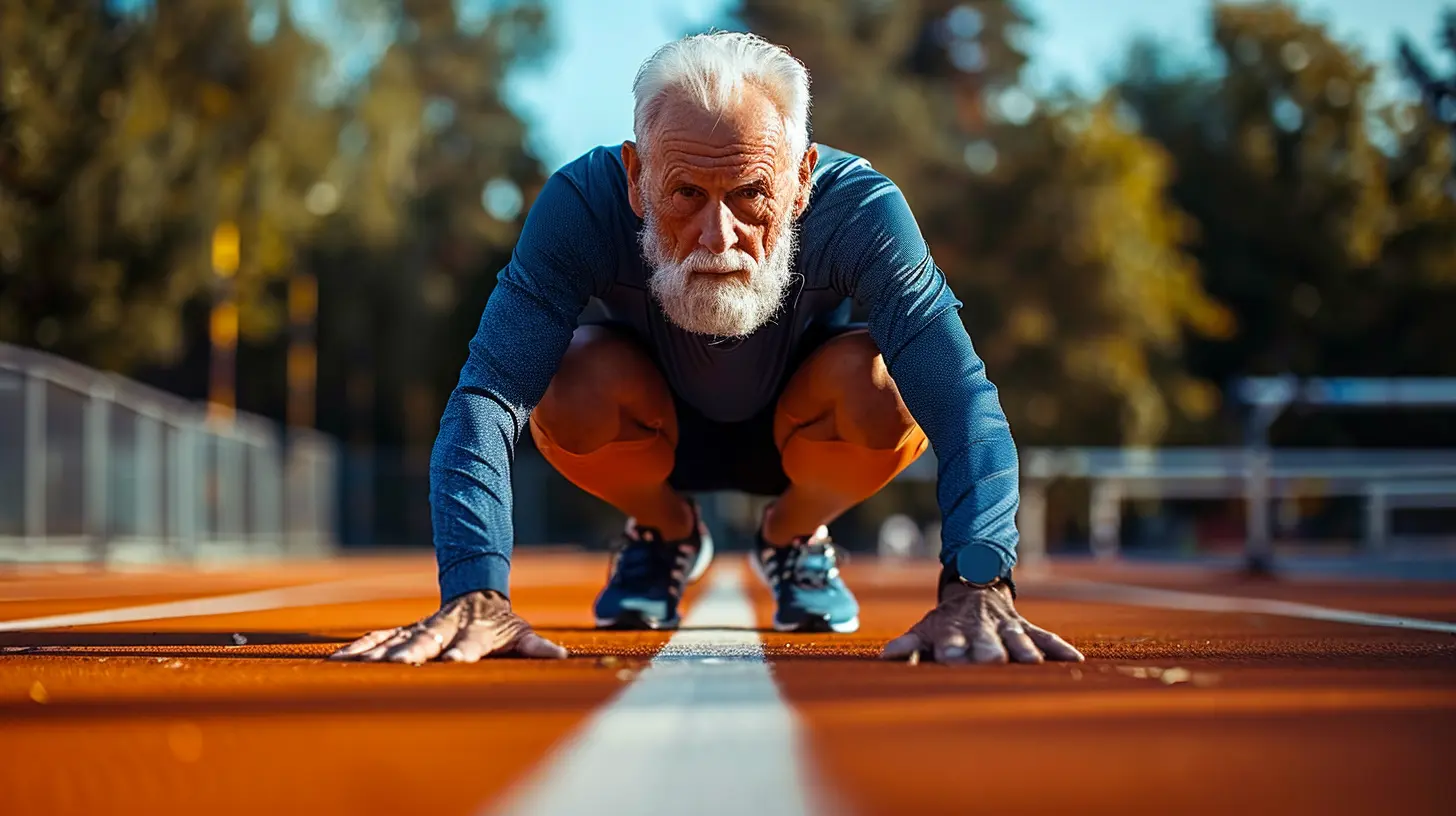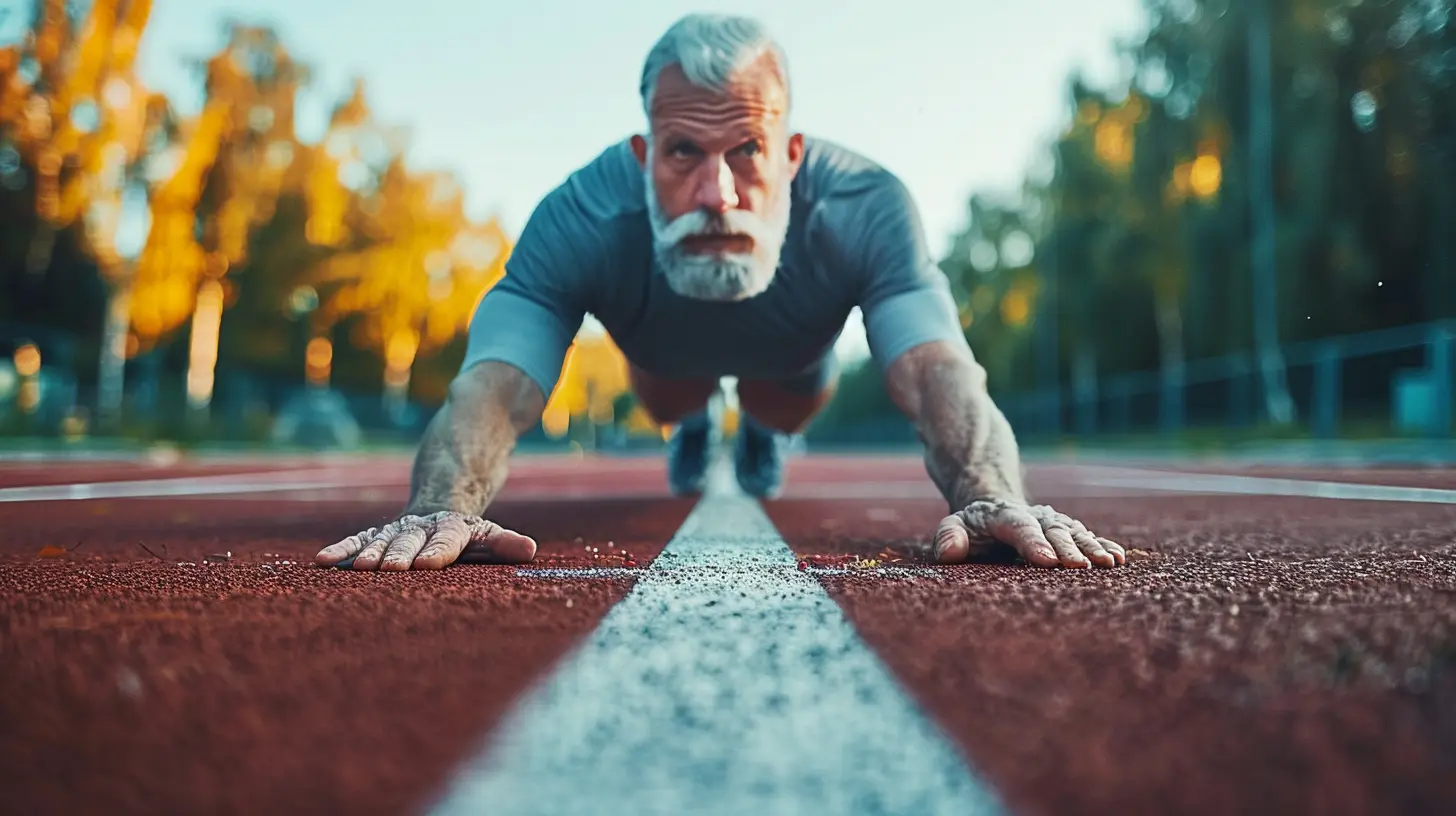The Importance of Stretching for Older Athletes
10 April 2025
As we age, our bodies change in ways that can sometimes feel unexpected, especially when it comes to physical activity. For older athletes, whether you're someone who's been active your whole life or you're just getting back into a fitness routine, stretching becomes not just a good idea but an absolute must. You might be thinking, "I already know how to stretch," but trust me, there's more to it than just bending over to touch your toes for a few seconds.
Stretching is often overlooked, especially by people who think they don’t have time for it. But here’s the thing: if you’re an older athlete and you aren’t stretching properly, you’re setting yourself up for injury, stiffness, and slower recovery times. So, why is stretching so important for older athletes? Let’s break it down and talk about how stretching can keep you on top of your game for years to come.

Why Stretching Is Essential for Older Athletes
1. Improved Flexibility and Range of Motion
As we age, our muscles naturally become shorter and tighter. This can make everyday movements — like bending down to tie your shoes or reaching for something on a top shelf — feel more challenging. For athletes, reduced flexibility can also impact performance. Whether you're playing tennis, running, or lifting weights, flexibility impacts how fluidly and efficiently you can move.Stretching helps to combat this natural decline in flexibility by keeping the muscles long and limber. When you stretch consistently, you maintain or even improve your range of motion, which means you can move more freely and with less effort. For older athletes, this can make all the difference between staying active and sidelining yourself due to stiffness or injury.
2. Enhanced Blood Flow and Circulation
Stretching isn’t just about your muscles — it’s about your entire body. When you stretch, you're increasing blood flow to the muscles, which helps to deliver oxygen and nutrients that are essential for muscle recovery and growth. This improved circulation also helps to remove metabolic waste from the muscles, reducing soreness and speeding up recovery after exercise.For older athletes, this is especially important. As we get older, circulation naturally declines, which means that muscles don't recover as quickly as they used to. Stretching helps to counteract this by keeping the blood pumping and making sure your muscles get the nutrients they need to stay strong and healthy.
3. Injury Prevention
One of the biggest risks for older athletes is injury, and unfortunately, the risk only increases with age. Our muscles, tendons, and joints become less pliable as we age, which can lead to strains, sprains, and other injuries if we push ourselves too hard without proper preparation.Stretching before and after exercise helps to prepare your muscles for the activity ahead. It warms them up, making them more elastic and less prone to injury. Stretching also helps to improve joint health by lubricating the joints and increasing their range of motion, which can help prevent injuries like sprains and dislocations.
4. Reduced Muscle Stiffness and Soreness
You know that feeling when you wake up after a tough workout and your muscles feel like they’ve turned to stone? That’s muscle stiffness, and it becomes more common as we get older. Stretching can help to reduce this stiffness by keeping your muscles loose and flexible.Post-workout stretching, in particular, is key for reducing muscle soreness. When you stretch after exercise, you help to flush out the lactic acid that builds up in your muscles during your workout. This reduces the post-exercise soreness (also known as DOMS — Delayed Onset Muscle Soreness) that can make it tough to get back to the gym or out on the field the next day.
5. Stress Relief and Mental Clarity
Stretching isn’t just good for your body — it’s good for your mind, too. As we get older, stress can take a toll on both our mental and physical health. Stretching helps to release tension in the body, which can help to reduce stress and improve mental clarity.When you stretch, you’re also practicing mindfulness, focusing on your body and your breath. This can help to calm your mind and reduce anxiety, which is particularly important for older athletes who may be juggling the demands of work, family, and fitness.
6. Better Posture
Let’s be honest: as we get older, our posture can start to suffer. Whether it’s from sitting too much or simply the effects of aging, many of us develop poor posture habits, like slouching or rounding our shoulders. This not only affects how we look, but it can also lead to back pain, neck pain, and even headaches.Stretching helps to improve posture by lengthening tight muscles and strengthening the muscles that support proper alignment. For athletes, this can improve performance by allowing you to move more efficiently and with better form.

Types of Stretching for Older Athletes
So now that we know why stretching is so important, let’s talk about the different types of stretching and how they can benefit older athletes.1. Static Stretching
This is the type of stretching most people are familiar with. Static stretching involves holding a stretch for a period of time (usually 20-30 seconds) without moving. This type of stretching is great for improving flexibility and range of motion, and it’s best done after a workout when your muscles are warm.For older athletes, static stretching can help to keep the muscles long and limber, preventing the stiffness and tightness that can lead to injury.
2. Dynamic Stretching
Dynamic stretching involves moving through a range of motion, usually in a controlled, repetitive manner. This type of stretching is great for warming up before a workout because it helps to increase blood flow to the muscles and prepare them for the activity ahead.For older athletes, dynamic stretching is essential for injury prevention. It helps to get the muscles and joints ready for exercise, reducing the risk of strains and sprains.
3. PNF Stretching (Proprioceptive Neuromuscular Facilitation)
PNF stretching is a more advanced form of stretching that involves contracting and relaxing the muscles while stretching. It’s often done with a partner or a resistance band and is great for increasing flexibility and range of motion.While PNF stretching can be a bit more challenging, it’s a great option for older athletes who are looking to improve their flexibility quickly.

Best Stretching Routine for Older Athletes
Now that we know the types of stretching, let’s put it all together into a simple routine that older athletes can follow to stay flexible, injury-free, and performing at their best.Pre-Workout Dynamic Stretching Routine:
1. Leg Swings: Stand next to a wall for balance and swing one leg forward and backward, keeping your torso upright. Do 10-15 repetitions on each leg.2. Arm Circles: Extend your arms out to the sides and make small circles, gradually increasing the size of the circles. Do this for about 30 seconds.
3. Hip Circles: Place your hands on your hips and make large circular movements with your hips. This helps to loosen up the hips and lower back.
4. Walking Lunges: Step forward into a lunge position, keeping your back straight and your knees at 90-degree angles. Step up and repeat on the other leg. Do about 10 repetitions on each side.
Post-Workout Static Stretching Routine:
1. Hamstring Stretch: Sit on the floor with one leg extended and the other bent. Reach for your toes and hold the stretch for 20-30 seconds. Switch legs and repeat.2. Quadriceps Stretch: Stand on one leg and pull your other foot toward your glutes, keeping your knees close together. Hold for 20-30 seconds and then switch legs.
3. Chest Stretch: Stand in a doorway and place your hands on either side of the doorframe. Step forward slightly to feel a stretch in your chest. Hold for 20-30 seconds.
4. Child’s Pose: Kneel on the floor and sit back on your heels. Stretch your arms forward and lower your chest to the ground. Hold for 30 seconds.

Tips for Effective Stretching
1. Warm Up First: Never stretch cold muscles. Always warm up with light activity (like walking or cycling) before stretching to prevent injury.2. Don’t Bounce: When doing static stretches, avoid bouncing, as this can cause muscle strain.
3. Breathe: Deep breathing helps to relax the muscles and deepen the stretch. Focus on inhaling and exhaling slowly.
4. Listen to Your Body: Stretching should never be painful. If a stretch feels uncomfortable or painful, ease off and try a gentler version.
Conclusion: Stretch to Stay in the Game
Stretching is one of the easiest yet most effective ways to care for your body, especially as you age. For older athletes, incorporating regular stretching into your routine can improve flexibility, reduce injury risk, enhance circulation, and even relieve stress. It’s not just about touching your toes — it’s about giving your body the tools it needs to keep moving, performing, and feeling great for years to come. So next time you hit the gym or the field, don’t skip the stretch. Your future self will thank you!all images in this post were generated using AI tools
Category:
StretchingAuthor:

Frankie Bailey
Discussion
rate this article
7 comments
Audrey McNeely
Great article! Stretching is essential for older athletes to enhance flexibility, prevent injuries, and maintain overall performance. Keep inspiring us to stay active!
April 19, 2025 at 11:56 AM

Frankie Bailey
Thank you for your kind words! I'm glad you found the article helpful. Staying active and stretching are key to longevity in sports!
Tenley McWilliams
Stretching is crucial for older athletes, enhancing flexibility and preventing injuries. As age impacts muscle elasticity, incorporating a tailored stretching routine can significantly improve performance and recovery, ultimately fostering longevity in their athletic pursuits.
April 18, 2025 at 3:08 AM

Frankie Bailey
Thank you for highlighting this important aspect! Tailored stretching is indeed vital for older athletes, as it promotes flexibility, reduces injury risk, and enhances overall performance and recovery.
Spencer Curry
Great insights on the importance of stretching for older athletes! It's crucial to emphasize how flexibility can enhance performance and reduce injury risk as we age. Your suggestions on incorporating regular stretching routines are practical and beneficial. Thank you for highlighting this essential aspect of athletic longevity and wellness!
April 17, 2025 at 4:22 AM

Frankie Bailey
Thank you for your thoughtful comment! I'm glad you found the insights valuable for promoting athletic longevity and wellness.
Kathleen Henderson
Stretching is essential for longevity in sports.
April 13, 2025 at 3:17 AM

Frankie Bailey
Absolutely! Stretching enhances flexibility, reduces injury risk, and supports overall performance, making it vital for older athletes.
Vivian McGinnis
Stretching is a game-changer for older athletes! It enhances flexibility, prevents injuries, and boosts overall performance. Embrace the power of stretching, and age will be just a number. Remember, it’s never too late to invest in your body and unleash your potential!
April 11, 2025 at 12:13 PM

Frankie Bailey
Absolutely! Stretching is crucial for maintaining flexibility and preventing injuries as we age. It's a vital part of any older athlete's routine to enhance performance and overall well-being. Thank you for highlighting its importance!
Valen Collins
Stretching is like a warm hug for our muscles—essential for staying active and feeling great as we age!
April 11, 2025 at 3:33 AM

Frankie Bailey
Absolutely! Stretching plays a crucial role in maintaining flexibility and preventing injury, making it vital for older athletes. Thank you for highlighting this!
Maria Hubbard
While stretching is crucial for flexibility and injury prevention in older athletes, a balanced approach incorporating strength training and mobility work is equally essential.
April 10, 2025 at 1:03 PM

Frankie Bailey
Thank you for your insightful comment! I completely agree that a balanced regimen of stretching, strength training, and mobility work is vital for older athletes to enhance performance and reduce injury risk.
MORE POSTS

The Literary Side of Sports: Novels That Dive Into the Game

How Cognitive Training is Shaping the Future of Elite Sports

How to Choose the Right Bat for Your Swing

How to Make Running a Habit You’ll Stick With

How One Team’s Tactical Discipline Overcame the Odds

The Evolution of Ski Technology: From Wooden Skis to Carbon Fiber